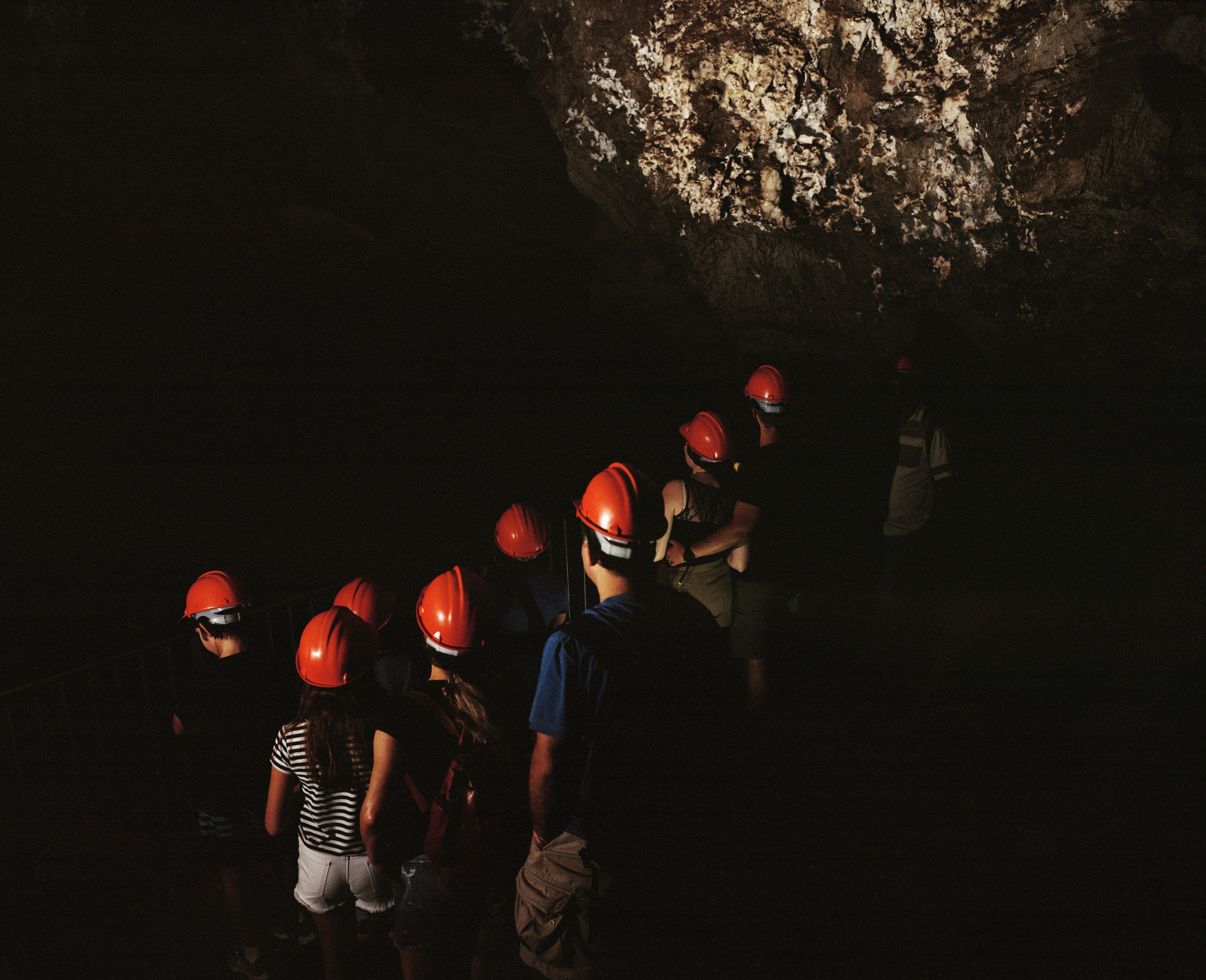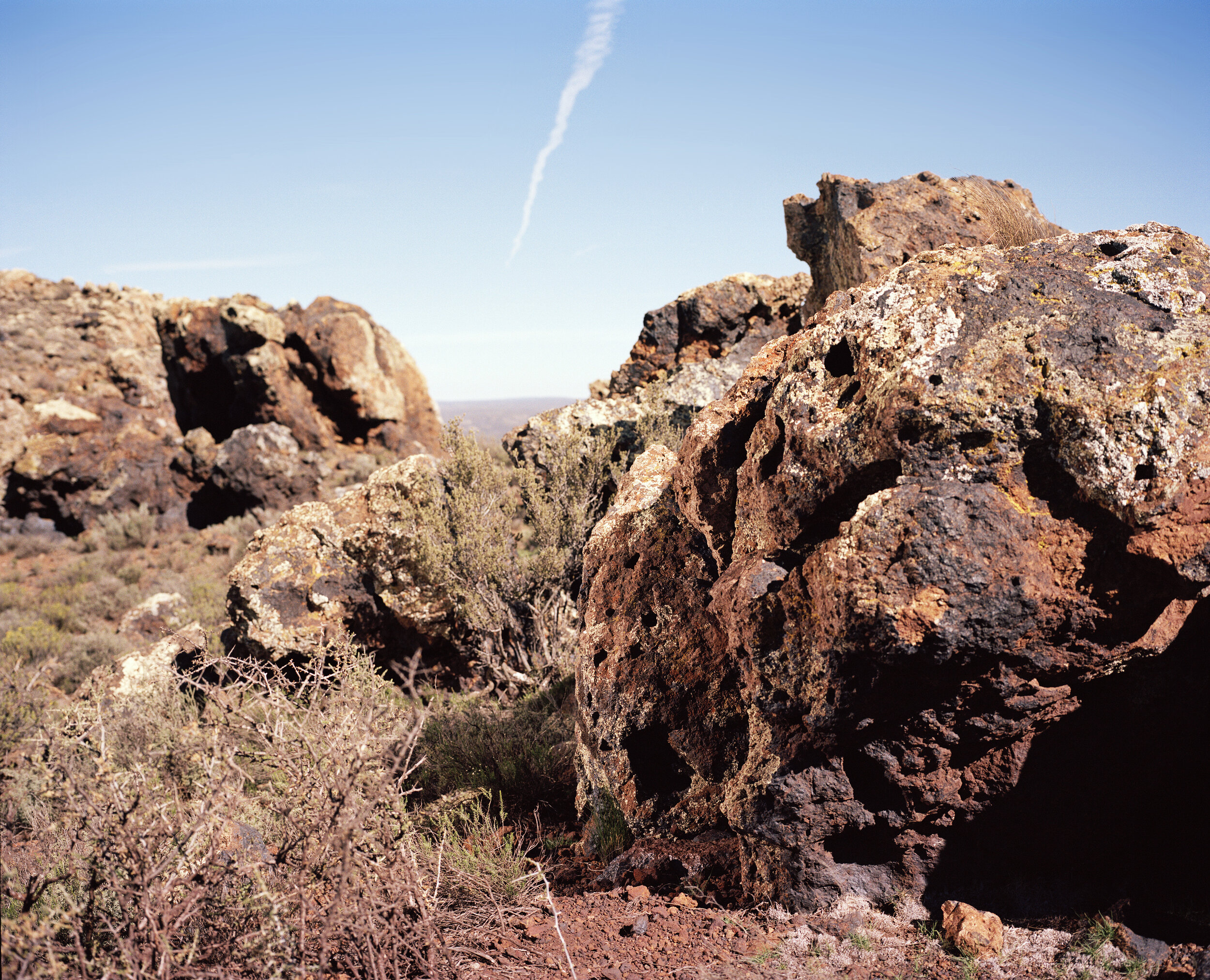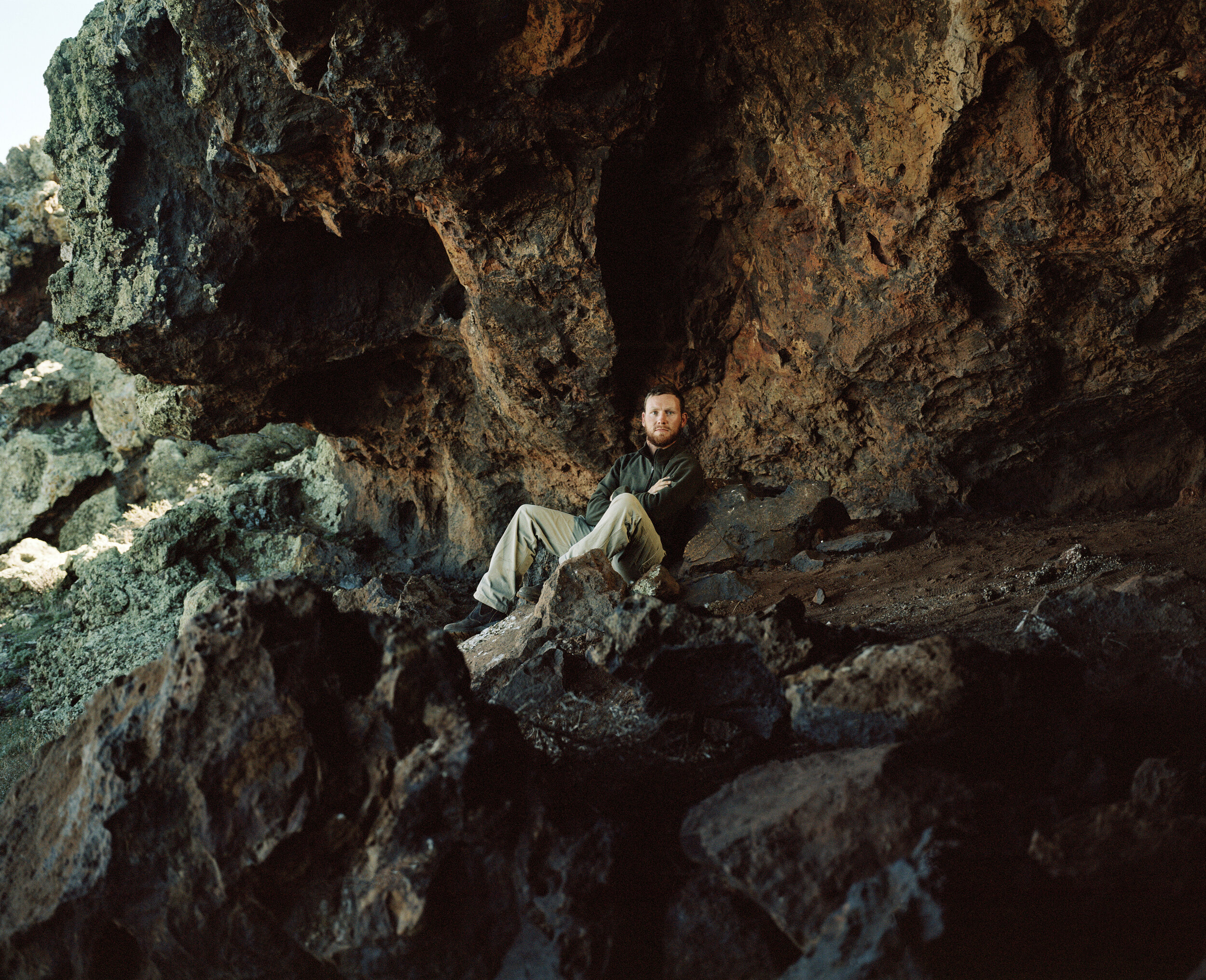DETAIL #2, YSTERRANTE (NEAR THREE SISTERS) NORTHERN CAPE
SEARCHING WITH MARIE (FROM "DIE HEMELBLOM" BY JAN RABIE, 1971), BLOMBOS CAVES, WESTERN CAPE
‘But I was never in the Earth room yesterday!’ Says Marie indignantly. ‘You are imagining it!’
From Die Hemelblom (The Heaven Flower) by Jan Rabie, 2nd edition 1974, Tafelberg, first published 1971. Translated from the original Afrikaans.
The Hemelblom was sent to the earth by a concerned galactic council to ensure the survival of life on earth in the face of a new world war. The plant was specifically grown to remove the poisonous elements introduced by humans - feeding on pollution it would rapidly cover the earth and wipe out most of humankind but leave a new earth covered with fresh fertile soil.
Read MoreTHE END OF THE EARTH #2, PUNTJIE, WESTERN CAPE
THE END OF THE EARTH #1, PUNTJIE, WESTERN CAPE
ASTEROID, (FROM "DIE HEMELBLOM" BY JAN RABIE, 1971), PUNTJIE, WESTERN CAPE
THE BIG HOLE, KIMBERLEY, NORTHERN CAPE
DETAIL #2, TABLE MOUNTAIN, WESTERN CAPE
THE END OF THE EARTH, CAPE POINT, WESTERN CAPE
These cliffs are always reminding us of the ‘End of the Earth’ - here indeed ends, it seems like it just falls into the deep dark sea.
Read MoreREST STOP, SWARTBERG PASS, WESTERN CAPE
STERKFONTEIN CAVES, (FROM SWART STER OOR DIE KAROO, JAN RABIE, 1957) JOHANNESBURG, GAUTENG
‘The time: Just before the end of the 20th century, just after the first human feet touched the moon and Mars.
The place: Somewhere in the Southwest Karoo on the highest level of the big empty table land where the world's largest observatory has been standing since the first human generation… This whole complex of highly specialized activities is known as Saakni, the South —African Cosmic Research Institute, a secret, forbidden world, set apart by a twenty-kilometer-wide buffer strip, guards and laser beams.’
Photograph inspired by ‘Swart ster oor die Karoo’ (Black star over the Karoo) by Jan Rabie, 1957. the Saankni institute is underground, and becomes a safe haven for humans after the Earth stops turning and the surface becoms unbearably cold.
Read MoreVOLCANO #3, SALPETERKOP, NORTHERN CAPE
Salpeterkop (Saltpetre Hill) was an active volcano around 66 million years ago – estimated as the last one in Southern Africa. It is interesting to note that about 2 km of its original height has been eroded down, so we are seeing at a level 'deep in the throat of the volcano'. The remains of this volcano is visible from the SALT (South African Large Telescope) site near Sutherland.
'Who or whatever is busy there especially chose this meandering gorge.' From Sending Kosmos, ID Lamprecht, 1980. Daan Retief Publishers, 1980. (Translated from the original Afrikaans)
Traveling beyond the speed of light in a rocket that took off from a secret location in Gamkaskloof, Professor Verhoef and Hansie Strydom start remembering events from the future. They somehow know that the star they are heading towards is called the Verhoef Sun and one of it’s planets Strydom.
LAUNCH SITE (FROM SENDING KOSMOS, ID LAMPRECHT, 1980), GAMKASKLOOF, WESTERN CAPE
'Who or whatever is busy there especially chose this meandering gorge.' From Sending Kosmos, ID Lamprecht, 1980. Daan Retief Publishers, 1980. (Translated from the original Afrikaans)
Traveling beyond the speed of light in a rocket that took off from a secret location in Gamkaskloof, Professor Verhoef and Hansie Strydom start remembering events from the future. They somehow know that the star they are heading towards is called the Verhoef Sun and one of it’s planets Strydom.
Read MoreVOLCANO #2, SALPETERKOP, NORTHERN CAPE
Salpeterkop (Saltpetre Hill) was an active volcano around 66 million years ago – estimated as the last one in Southern Africa. It is interesting to note that about 2 km of of its original height has been eroded down, so we are seeing at a level 'deep in the throat of the volcano'. The remains of this volcano is visible from the SALT (South African Large Telescope) site near sutherland.
Read MoreTHE LANDING #2, (FROM “SWART STER OOR DIE KAROO, JAN RABIE 1957), TABLE MOUNTAIN, CAPE TOWN, WESTERN CAPE
'They stared, and then see it taking on a form …a lump to the left, and flat in the middle, and a pointed, smaller peak to the right. Yes, yes. Table Mountain between Devil's Peak and Lion's Head. For a moment they were overwhelmed with real joy, before the paralysis return. What terrible tragedy happened here? There are no traces of a city anymore, just ice. It is Jordaan who sees it first, a small glossy lump above the ice, a structure like a glass dome. There they will probably land.'
Photograph inspired by ‘Swart ster oor die Karoo’ (Black star over the Karoo) by Jan Rabie, 1957. In the novel future humans are living inside Table Mountain as it is too cold outside.
THE LANDING, (FROM “SWART STER OOR DIE KAROO, JAN RABIE 1957), TABLE MOUNTAIN, CAPE TOWN, WESTERN CAPE
'They stared, and then see it taking on a form …a lump to the left, and flat in the middle, and a pointed, smaller peak to the right. Yes, yes. Table Mountain between Devil's Peak and Lion's Head. For a moment they were overwhelmed with real joy, before the paralysis return. What terrible tragedy happened here? There are no traces of a city anymore, just ice. It is Jordaan who sees it first, a small glossy lump above the ice, a structure like a glass dome. There they will probably land.'
Photograph inspired by ‘Swart ster oor die Karoo’ (Black star over the Karoo) by Jan Rabie, 1957. In the novel future humans are living inside Table Mountain as it is too cold outside.
Read MoreIn 2011 the deepest land-living creature was discovered inside a South African gold mine. A new species of nematode worm Halicephalobus Mephisto was found 3.5km below the surface. They thrive in conditions thought to be too harsh for any creature - where previously it was thought that only single-celled bacteria survive.
The discovery has also encouraged the search for life on other planets with the possibility of more creatures surviving underground.
THE OLD MINE #4, GOLD REEF CITY, JOHANNESBURG, GAUTENG
In 2011 the deepest land living creature was discovered inside a South African gold mine. A new species of nematode worm Halicephalobus mephisto was found 3.5km below the surface. They thrive in conditions thought to be too harsh for any creature - where previously it was thought that only single-celled bacteria survive.
The discovery has also encouraged the search for life on other planets with the possibility of more creatures surviving underground.
VOLCANO #1, SALPETERKOP, NORTHERN CAPE
Salpeterkop (Saltpetre Hill) was an active surface volcano about 66 million years ago – believed to be the last one in South Africa, making it the youngest known active volcano in Africa south of the Equator. When viewing this structure today, it must be remembered that about 2 km of rock has been eroded away, so we are looking at a level deep in the throat of the volcano. Its present summit is reached via a kilometre-wide lava ash field.*
Read MoreDETAIL, R354 BETWEEN MATJIESFONTEIN AND SUTHERLAND
Our consideration of what is large and what is small is constantly provoked as we experience the many details of the landscape. Even then as we use ourselves as a type of scale and our bodies are in turn observed by the landscape - it all becomes a loop of relativity. From the mere thought of what we consider the smallest atomic parts to the imagining of other distant heavenly bodies without measure.
Read More














